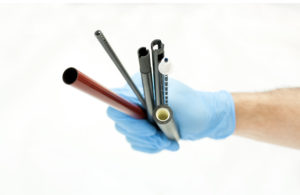MIT and Brigham and Women’s Hospital researchers say they have a way of splitting ventilators which could address many of the safety concerns — potentially boosting the supply of ventilators amid the COVID-19 pandemic. They have demonstrated their concept’s effectiveness in the lab — but they still caution it should be used only as a last resort … [Read more...] about MIT researchers may have invented a safer way of splitting ventilators
Composites
Polygon touting its PolyMed composite tubing
Polygon (Walkerton, Ind.) plans to show off its PolyMed composite tubing for surgical applications during MD&M Minneapolis, Oct. 23–24. PolyMed tubing, according to Polygon, is ideal for a wide variety of applications including placement on electro-surgical devices (both monopolar and bipolar), surgical ablation tools, suction irrigation or … [Read more...] about Polygon touting its PolyMed composite tubing
Metal injection molding vs. machining: When MIM is best
Metal injection molding (MIM) works well for high-volume production of small, complex medical device parts of consistent quality. Steve Santoro, Micro Demand for small, lightweight, high-strength, complex-shaped components is growing across industries today, from automotive, consumer electronics, aerospace and defense to orthodontics and … [Read more...] about Metal injection molding vs. machining: When MIM is best



